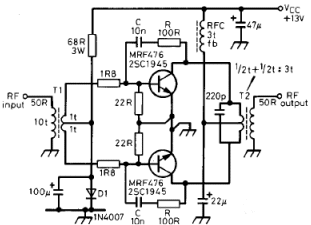Follow along with the video below to see how to install our site as a web app on your home screen.
Note: This feature may not be available in some browsers.

This amplifier will be used for power amplifier thah it is work at 3-30Mhz frequency range. And input power will be max 0.5W and output power will be 4-5W. Also Av=50 and BD135 will be used. Circuit diagram is attached. How can i design this amplifier ?